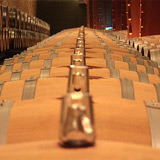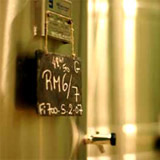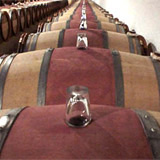Malolactic fermentation (MLF in many tasting notes) - is a process of a change used in winemaking where tart-tasting 'malic' acid (like those found in green apples), naturally present in grape must, is converted to softer-tasting 'lactic' acid (found in milk).
This secondary fermentation is primarily applied to red wines destined for aging, but is also common for some white wines like Chardonnay, particularly those that are aged in oak. Besides reducing the acidity in a wine, malolactic fermentation can also impart buttery or nutty aromas to a wine.
Malolactic fermentation also produces esters in the wine, many of which are responsible for a pleasant "fruity" nose. The lactic acid bacteria responsible for malolactic fermentation are called (Oenocuccus oeni).
This process can occur naturally. However, in commercial wine making, malolactic fermentation typically is initiated by an inoculation of desirable bacteria. This prevents undesirable bacterial strains from producing off-flavours. Conversely, commercial winemakers actively prevent malolactic conversion when it is not desired, to prevent accidental initiation and maintain a fresher, more crisp profile in the finished wine.
Sometimes malolactic fermentation can occur unintentionally after the wine is bottled. This is almost always a fault, and the result is a slightly carbonated wine that typically tastes bad and with a little spritz.
Because it consumes malic acid, which is present at the time the grapes are crushed, malolactic fermentation can take place at any time during or after alcoholic fermentation. A wine undergoing MLF will be cloudy due to the presence of bacteria, and may have the curious smell of buttered popcorn.
So a rich, creamy and well rounded Chardonnay, such as the Brookfields 'Marshall Bank' Chardonnay 2007, which many of you have enjoyed previous vintages over the years, is a result of malolactic fermentation.











